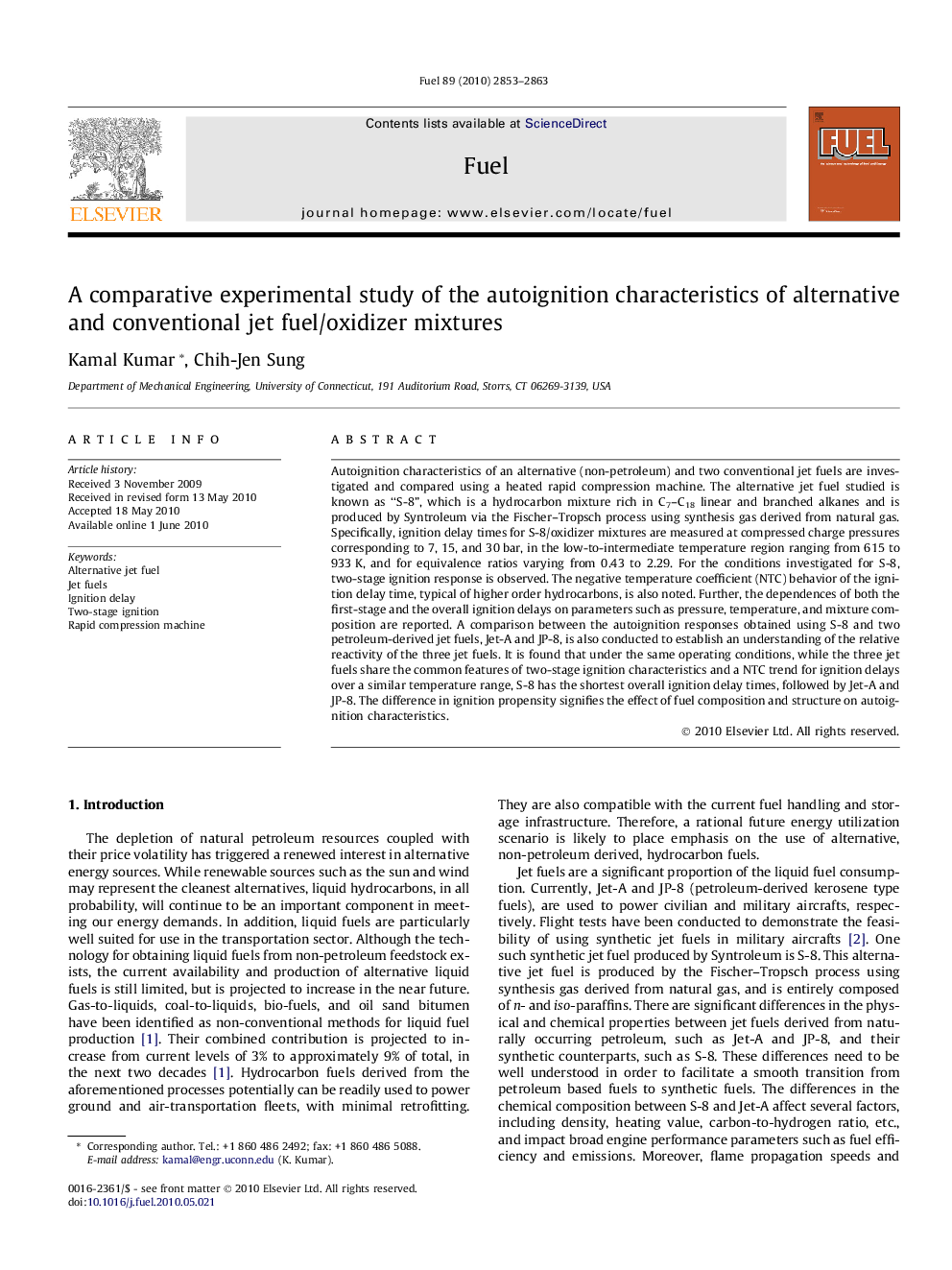| کد مقاله | کد نشریه | سال انتشار | مقاله انگلیسی | نسخه تمام متن |
|---|---|---|---|---|
| 206550 | 461192 | 2010 | 11 صفحه PDF | دانلود رایگان |

Autoignition characteristics of an alternative (non-petroleum) and two conventional jet fuels are investigated and compared using a heated rapid compression machine. The alternative jet fuel studied is known as “S-8”, which is a hydrocarbon mixture rich in C7–C18 linear and branched alkanes and is produced by Syntroleum via the Fischer–Tropsch process using synthesis gas derived from natural gas. Specifically, ignition delay times for S-8/oxidizer mixtures are measured at compressed charge pressures corresponding to 7, 15, and 30 bar, in the low-to-intermediate temperature region ranging from 615 to 933 K, and for equivalence ratios varying from 0.43 to 2.29. For the conditions investigated for S-8, two-stage ignition response is observed. The negative temperature coefficient (NTC) behavior of the ignition delay time, typical of higher order hydrocarbons, is also noted. Further, the dependences of both the first-stage and the overall ignition delays on parameters such as pressure, temperature, and mixture composition are reported. A comparison between the autoignition responses obtained using S-8 and two petroleum-derived jet fuels, Jet-A and JP-8, is also conducted to establish an understanding of the relative reactivity of the three jet fuels. It is found that under the same operating conditions, while the three jet fuels share the common features of two-stage ignition characteristics and a NTC trend for ignition delays over a similar temperature range, S-8 has the shortest overall ignition delay times, followed by Jet-A and JP-8. The difference in ignition propensity signifies the effect of fuel composition and structure on autoignition characteristics.
Journal: Fuel - Volume 89, Issue 10, October 2010, Pages 2853–2863